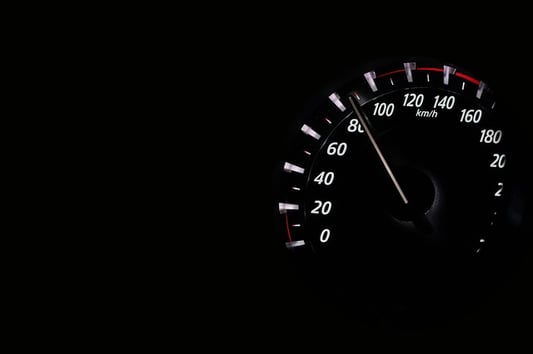How Do You Calculate Acceleration How Do You Calculate Acceleration Easy Wa6
"Whoa, you really went from zero to sixty there!" Have you ever heard someone use the idiom "zero to sixty" like I did in the above example? When someone says something went from "zero to sixty," they're really saying that things accelerated very quickly. Acceleration is the amount by which the velocity of something changes over a set period of time. In this article, we'll be talking all about acceleration: what it is and how to calculate it. Buckle up! Acceleration is the rate of change of velocity over a set period of time. You need to have both velocity and time to calculate acceleration. Many people confuse acceleration with velocity (or speed). First of all, velocity is simply speed with a direction, so the two are often used interchangeably, even though they have slight differences. Acceleration is the rate of change of velocity, meaning something is getting faster or slower. You can use the acceleration equation to calculate acceleration. Here is the most common acceleration formula: $$a = {Δv}/{Δt}$$ where $Δv$ is the change in velocity and $Δt$ is the change in time. You can also write the acceleration equation like this: $$a = {v(f) - v(i)}/{t(f) - t(i)}$$ In this acceleration equation, $v(f)$ is the final velocity while is the $v(i)$ initial velocity. $T(f)$ is the final time and $t(i)$ is the initial time. Some other things to keep in mind when using the acceleration equation: Now let's breakdown the acceleration equation step-by-step in a real example. Now we'll breakdown the acceleration formula step-by-step using a real example. A race car accelerates from 15 m/s to 35 m/s in 3 seconds. What is its average acceleration? First, write the acceleration equation. $$a = {v(f) - v(i)}/{t(f) - t(i)}$$ Next, define your variables. $a$ = what we are solving for $$V(f) = 35 m/s$$ $$V(i) = 15 m/s$$ $$T(f) = 3 s$$ $$T(i) = 0 s$$ Now, plug your variables into the equation and solve: $$A = {{(35 - 15)m}/{s}/{(3 - 0)s}$$ $$A = {(35 - 15)}/{(3 - 0)} m/s^2$$ $$A = {20/3} m/s^2$$ $$A = 6.66 m/s^2$$ Let's try another example. A cyclist traveling at 23.2 m/s comes to a complete stop in 1.5 $s$. What was her deceleration? First, write the acceleration equation. $$a = (v(f) - v(i)) ÷ (t(f) - t(i))$$ Next, define your variables. a = what we are solving for $$V(f) = 0 m/s$$ $$V(i) = 23.2 m/s$$ $$T(f) = 1.4 s$$ $$T(i) = 0 s$$ Now, plug your variables into the equation and solve: $$A ={{(0 - 23.2)m}/s}/{(1.4 - 0)s}$$ $$A = {0 - 23.2}/{1.4 - 0} m/s^2$$ $$A = -23.2/1.4 m/s^2$$ $$A = -16.57 m/{s^2}$$ Wondering how to calculate acceleration using a different formula? There are several other common acceleration formulas. Angular acceleration is the rate at which the angular acceleration of a rotating object changes with respect to time. Here is the angular acceleration equation: $$a = {\change \in \angular \velocity}/{\change \in \time}$$ Centripetal acceleration is the rate of motion of an object inwards towards the center of a circle. Here is the centripetal acceleration equation: $$a(c) = {v^2}/r$$ $a(c) $= acceleration, centripetal $v$ = velocity $r$ = radius Acceleration is the rate of change of velocity over a set period of time. You calculate acceleration by dividing the change in velocity by the change in time. Looking for other science explanations? We break down electrical energy and how to identify the different types of cloudswith our expert guides. Working on a research paper but aren't sure where to start?Then check out our guide, where we've collected tons of high-quality research topics you can use for free. Need help with English class—specifically with identifying literary devices in texts you read? Then you'll definitely want to take a look at our comprehensive explanation of the most important literary devices and how they're used. Need more help with this topic? Check out Tutorbase! Our vetted tutor database includes a range of experienced educators who can help you polish an essay for English or explain how derivatives work for Calculus. You can use dozens of filters and search criteria to find the perfect person for your needs. {{cta('21006efe-96ea-47ea-9553-204221f7f333')}}
What Is Acceleration?
What Is the Acceleration Formula?

How to Calculate Acceleration: Step-by-Step Breakdown
2 Other Common Acceleration Formulas
Angular Acceleration Formula
Centripetal Acceleration Formula
Key Takeaways
What's Next?

About the Author
Hayley Milliman is a former teacher turned writer who blogs about education, history, and technology. When she was a teacher, Hayley's students regularly scored in the 99th percentile thanks to her passion for making topics digestible and accessible. In addition to her work for PrepScholar, Hayley is the author of Museum Hack's Guide to History's Fiercest Females.
Source: https://blog.prepscholar.com/acceleration-formula-equation
0 Response to "How Do You Calculate Acceleration How Do You Calculate Acceleration Easy Wa6"
Post a Comment